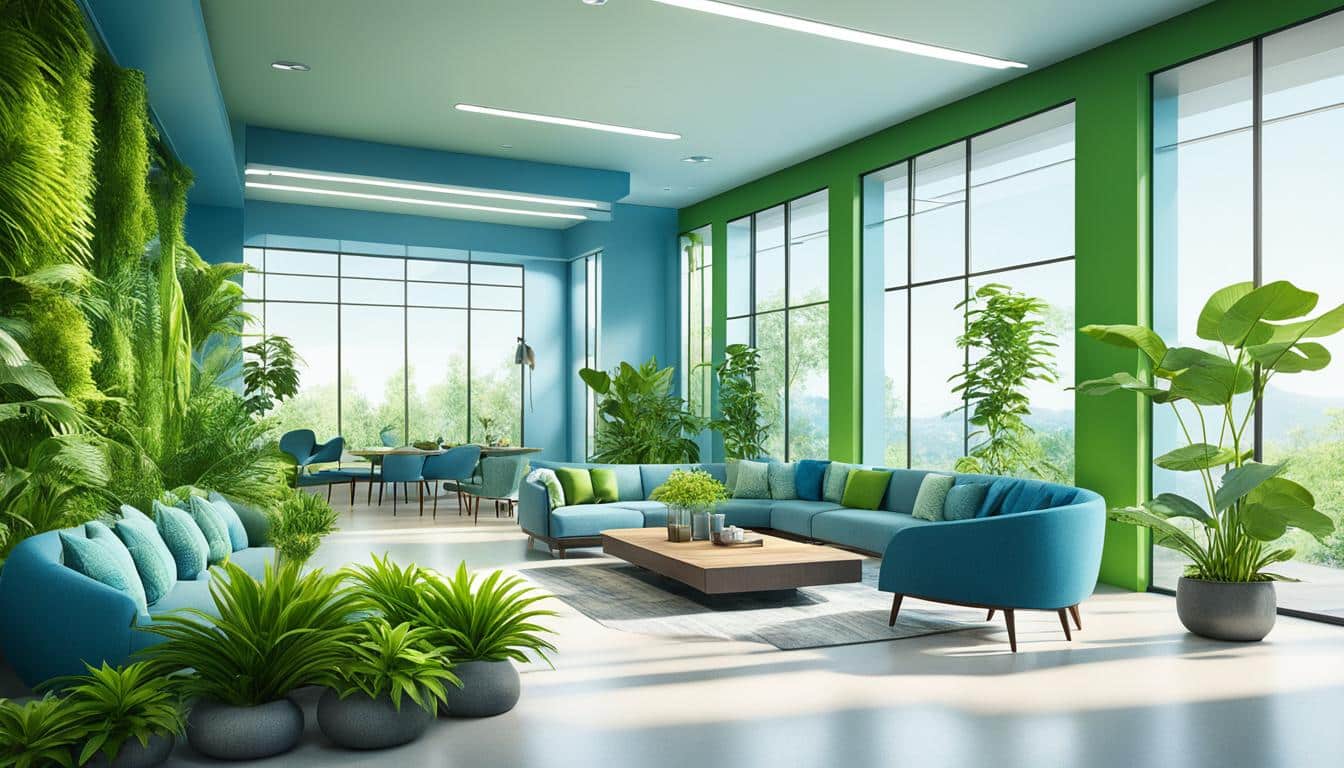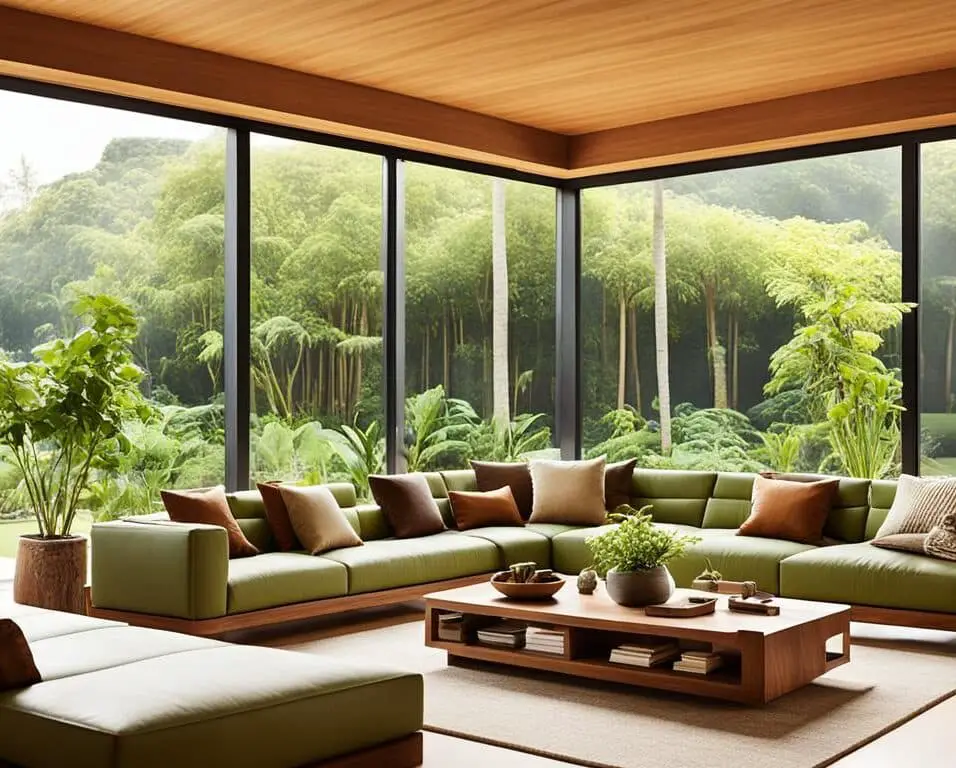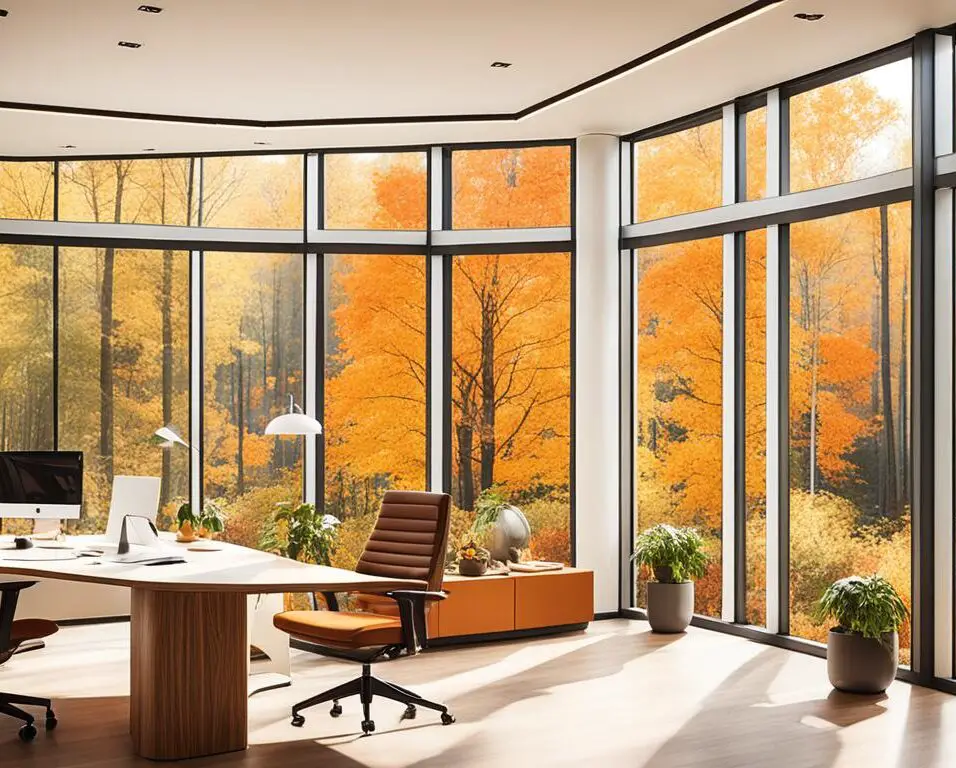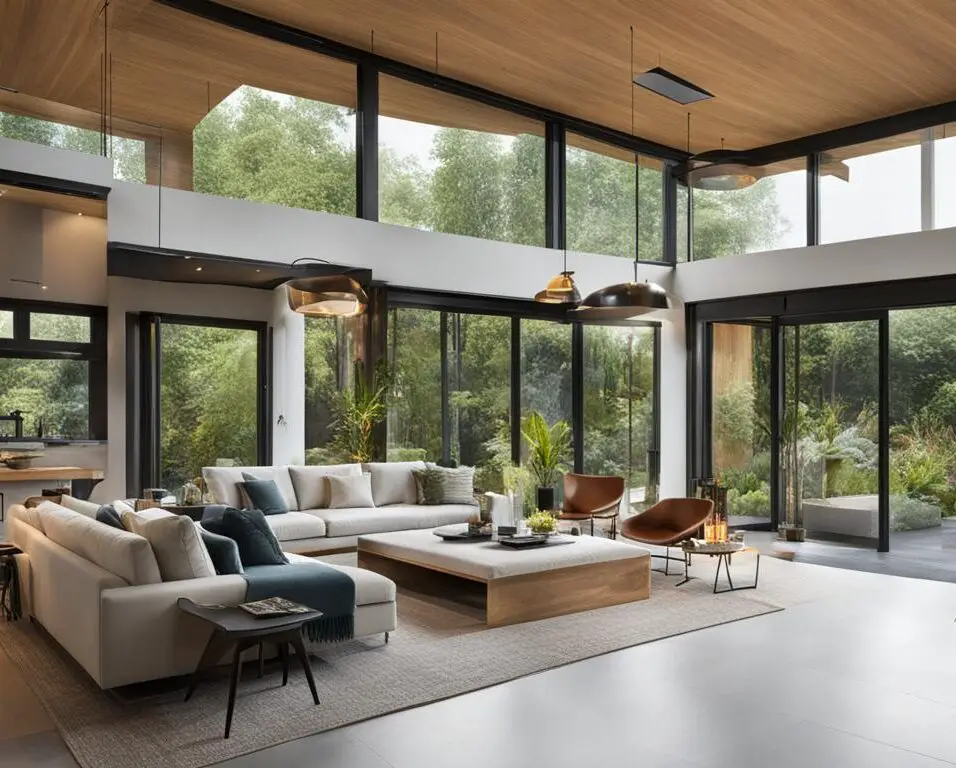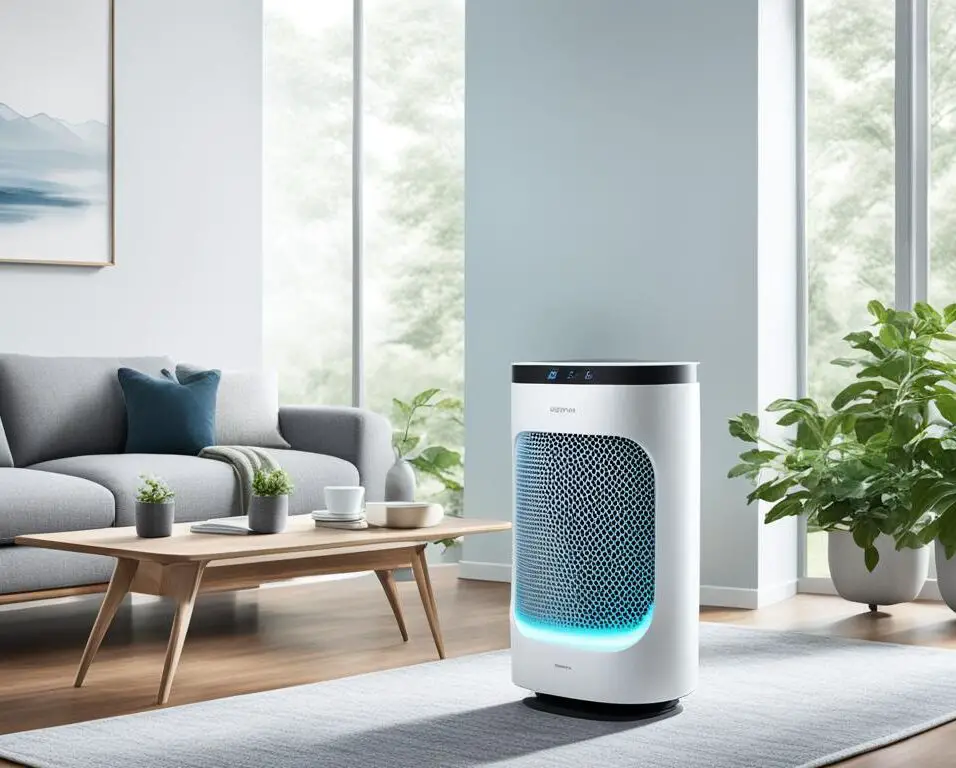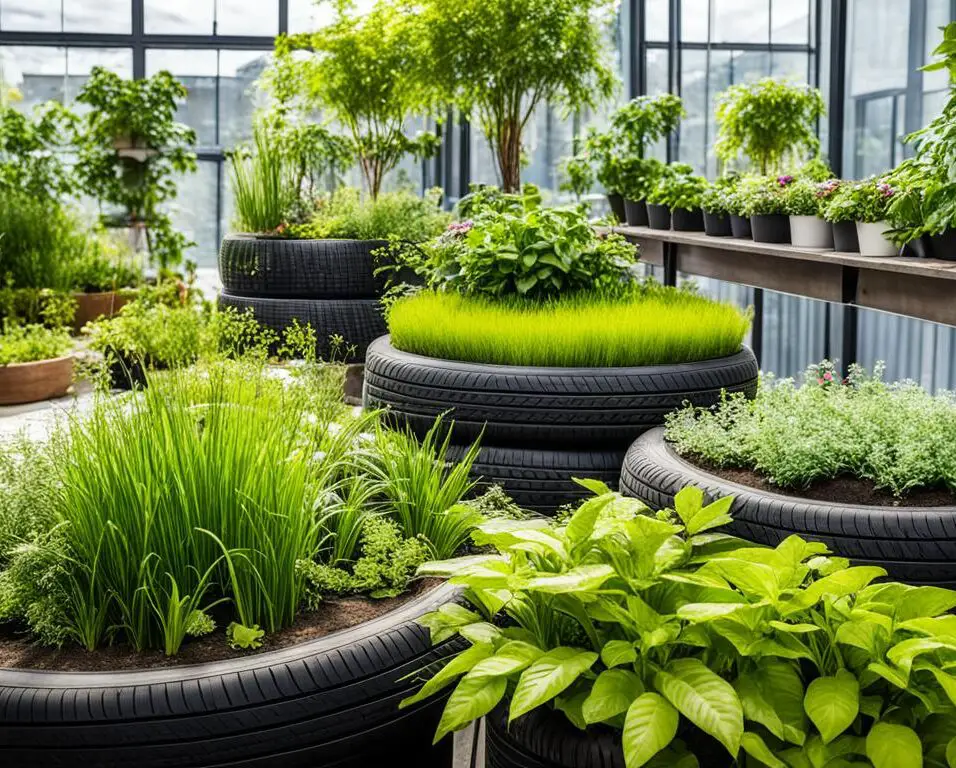Color and Nature: Exploring Color Psychology in Biophilic Interior Design
As a professional interior designer, I am constantly fascinated by the role of color in shaping our emotions and cognitive responses. When it comes to biophilic interior design, an approach that seeks to connect people with nature in the built environment, color psychology plays a crucial role in creating spaces that promote well-being and productivity.
By understanding the impact of color on our minds and bodies, we can strategically choose hues that evoke the desired emotional and cognitive responses. Incorporating color through wall paint, furniture, and decor can create a visually stimulating and inspiring atmosphere that positively impacts our mindset and productivity.
Key Takeaways
- Color psychology is a powerful tool in biophilic interior design, influencing our emotions and cognitive functioning.
- Strategically choosing colors can stimulate the appropriate emotional and cognitive responses, enhancing employee performance and well-being.
- Incorporating color can create a visually stimulating and inspiring atmosphere that positively impacts employees’ mindset and productivity.
- Wall paint, furniture, and decor are effective ways to incorporate color in the office environment.
- Understanding the impact of color on our minds and bodies is crucial in creating spaces that promote well-being and productivity.
The Power of Space in Biophilic Interior Design
Optimizing space utilization is key to designing an office that promotes productivity, well-being, and employee satisfaction. By carefully considering the layout and arrangement of furniture, creating designated collaborative areas, and providing quiet spaces for focused work, companies can create an office that maximizes both productivity and employee well-being. Utilizing space effectively not only improves workflow and communication but also contributes to a positive and conducive work environment.
When designing the office layout, it is essential to prioritize functionality and comfort. By strategically placing workstations, meeting areas, breakout spaces, and communal zones, companies can create a dynamic environment that encourages interaction and collaboration. Office design affects how employees interact with each other and their surroundings, directly impacting their well-being and engagement with work.
Creating Collaborative Areas
Collaboration is a vital aspect of modern work environments. By incorporating collaborative areas within the office space, companies can foster teamwork, creative problem-solving, and innovation. Depending on the organization’s needs, these areas can range from open-plan workstations to dedicated rooms equipped with whiteboards and audiovisual tools. These spaces should be designed to facilitate brainstorming sessions, team meetings, and informal discussions.
Effective collaboration is not just about physical space; it also requires a culture that values and supports teamwork. Encouraging open communication, providing resources, and fostering a sense of community are equally important.
Providing Quiet Spaces
While collaboration is essential, providing quiet spaces for focused work is equally crucial. Quiet areas offer employees an environment free from distractions, allowing them to concentrate on tasks that require focus and deep thinking. These spaces can be designed as individual workstations, private offices, or soundproof rooms. Incorporating acoustic elements, such as noise-canceling panels, can further enhance privacy and productivity within these areas.
Enhancing Employee Well-being
Maximizing employee well-being is a critical goal of biophilic interior design. The office layout should take into consideration factors such as natural lighting, ventilation, and proximity to nature. By providing access to views of the outdoors, incorporating indoor plants, and integrating natural materials into the design, companies can create a calming and rejuvenating environment that promotes employee well-being.
- Use natural lighting and adjustable blinds to create a bright workspace that mimics daylight.
- Integrate greenery through indoor plants to improve air quality and reduce stress levels.
- Incorporate biophilic elements, such as wood, stone, and water features, to create a sense of connection to nature.
By prioritizing space utilization, office layout, and employee well-being in biophilic interior design, companies can create an environment that enhances productivity, creativity, and overall employee satisfaction.
The Impact of Lighting in Biophilic Interior Design
The impact of lighting on individuals’ moods, energy levels, and productivity cannot be understated. Studies have shown that exposure to natural light can reduce headaches and eyestrain, improve overall mood, and even foster creativity.
Incorporating ample natural light in office spaces is crucial to create a welcoming and energizing atmosphere that enhances focus, alertness, and overall productivity. Additionally, the use of adjustable lighting fixtures and smart lighting systems can provide employees with control over their workspace, allowing them to personalize the lighting to suit their needs throughout the day.
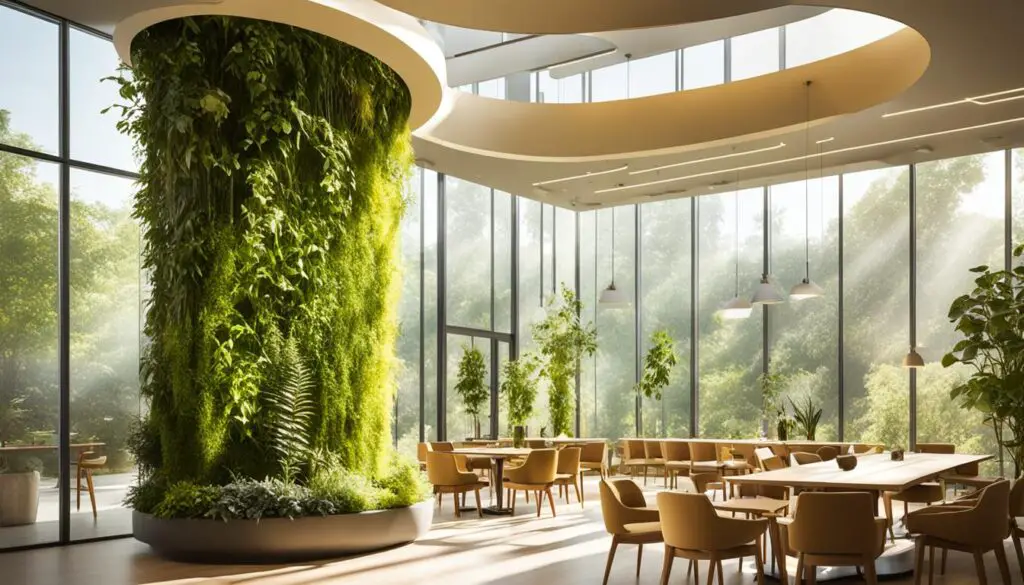
By optimizing the use of natural light and providing adjustable lighting options, companies can create an environment that promotes employee well-being and productivity. Natural light not only improves visual comfort but also stimulates the body’s natural circadian rhythms, helping to regulate sleep patterns and keep employees more alert and focused during the day.
“Natural light has a profound impact on our well-being. It not only enhances our mood and overall health but also has a positive effect on employee productivity and satisfaction.” – Dr. Emily Carter, Lighting Expert
Adjustable lighting fixtures and smart lighting systems offer the flexibility to adapt the intensity and color temperature of the light based on different tasks and preferences. This level of control empowers employees to create a personalized lighting environment that supports their comfort and concentration.
In addition to natural light and adjustable lighting, biophilic design principles also emphasize the integration of nature-inspired lighting elements, such as fixtures that mimic the patterns and colors found in natural settings. These elements further contribute to creating a visually appealing and calming atmosphere that enhances employee well-being.
Overall, incorporating natural light and offering adjustable lighting options in office spaces are essential strategies for optimizing employee productivity and creating a workspace that promotes well-being and satisfaction.
The Role of Biophilic Design in Interior Design
Recognizing the profound impact of nature on human well-being, contemporary office settings are increasingly adopting biophilic design principles. Integrating elements of nature, such as plants, natural materials, or views of the outdoors, has been shown to reduce stress levels, boost overall well-being, and increase productivity. Incorporating biophilic design in offices can create a more harmonious and inspiring environment for employees, promoting a sense of calm, creativity, and rejuvenation.
Biophilic design goes beyond simply adding a few potted plants to the office; it involves a thoughtful integration of nature-inspired elements throughout the workspace. By mimicking elements of nature, such as patterns, textures, and colors, biophilic design creates a connection to the natural world, which has been proven to have numerous benefits for employee well-being.
The Benefits of Biophilic Design
1. Nature Integration: Bringing nature into the workplace through the use of plants, natural materials, and natural light can have a positive impact on employees’ mental and physical health. Research suggests that exposure to nature reduces stress, lowers blood pressure, and improves mood and cognitive function.
2. Stress Reduction: The presence of natural elements in the office environment can help reduce stress levels among employees. Studies have shown that being surrounded by nature-inspired design elements can evoke feelings of relaxation and tranquility, leading to decreased stress and increased job satisfaction.
“Working in a biophilic environment provides a sense of calm and connection to the natural world, helping employees feel more grounded and less overwhelmed by work-related stressors.”
3. Employee Well-being: Biophilic design has a positive impact on overall employee well-being. The integration of natural elements into the workspace has been linked to increased creativity, improved focus and concentration, and enhanced job satisfaction. By creating a more pleasant and engaging work environment, companies can improve employee morale and retention.
By incorporating biophilic design principles into the office space, companies can significantly improve employee well-being and productivity. The use of plants, natural materials, and natural light creates a visually appealing and calming atmosphere that promotes stress reduction and enhances overall employee satisfaction.
“Biophilic design not only enhances the aesthetic appeal of the workspace but also nurtures a positive and nurturing environment that supports employee well-being and creativity.”
Optimizing Furniture and Layout in Biophilic Interior Design
The choice of furniture and its arrangement plays a critical role in crafting a productive office environment. Ergonomic furniture that supports good posture is essential for promoting employee comfort and well-being. By providing ergonomic chairs, adjustable desks, and supportive accessories, companies can significantly reduce physical discomfort and fatigue, ultimately boosting productivity.
In addition to ergonomic furniture, the layout of the office space is equally important. A flexible layout that allows for easy movement and collaboration can enhance communication and teamwork among employees. By strategically placing furniture, creating designated collaborative areas, and integrating movable partitions, companies can create a dynamic workspace that adapts to the evolving needs and tasks of their employees.
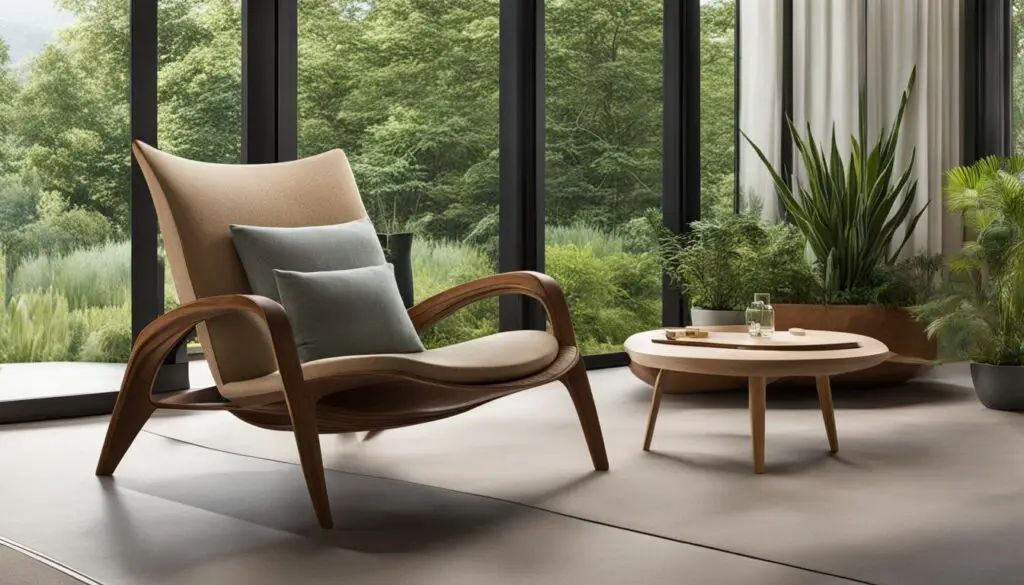
One key aspect of optimizing furniture and layout is ensuring that employee comfort is prioritized. By incorporating elements that promote comfort, such as soft seating areas, cozy break rooms, and relaxing green spaces, companies can create an environment that fosters relaxation and rejuvenation, leading to increased employee satisfaction and overall well-being.
Benefits of Ergonomic Furniture:
- Reduces physical discomfort and fatigue
- Improves posture and spinal alignment
- Enhances productivity and focus
- Prevents musculoskeletal disorders
- Boosts employee morale and job satisfaction
“The right choice of furniture can make a significant difference in employee comfort and performance. By investing in ergonomic furniture and designing a flexible layout, companies prioritize their employees’ well-being and provide a conducive environment for productivity and collaboration.” – Jane Smith, Interior Design Expert
Example of a Flexible Office Layout:
| Area | Description |
|---|---|
| Collaborative Zone | A central area with communal tables, whiteboards, and comfortable seating for brainstorming and team collaboration. |
| Quiet Area | A designated space with individual workstations or private cubicles for focused tasks and concentration. |
| Wellness Corner | A dedicated area with exercise equipment, yoga mats, and relaxing plants, encouraging physical activity and stress relief. |
| Lounge Area | A comfortable space with sofas and bean bags for casual meetings, informal discussions, and relaxation during breaks. |
Conclusion
An effectively designed office is a strategic blend of aesthetics, function, comfort, and psychological understanding. By carefully considering the principles of color psychology, space utilization, lighting, biophilic design, and furniture and layout, companies can create a work environment that promotes employee performance, motivation, and overall job satisfaction.
Color psychology plays a crucial role in creating the desired emotional and cognitive responses in employees. By incorporating the right colors in the office environment, companies can inspire creativity, boost productivity, and improve employee well-being. The strategic utilization of space, including the layout of furniture, facilitates better workflow, communication, and collaboration among team members, resulting in enhanced productivity and employee satisfaction.
Furthermore, lighting is a key factor that significantly impacts employees’ mood, energy levels, and productivity. Natural light fosters a sense of well-being, reduces eyestrain, and enhances creativity. Integrating adjustable lighting fixtures and smart lighting systems allows employees to personalize their workspace, boosting comfort and productivity throughout the day.
Finally, embracing biophilic design principles by incorporating elements of nature, such as plants, natural materials, and views of the outdoors, contributes to stress reduction, overall well-being, and increased productivity. Ergonomically designed furniture promotes employee comfort, reducing physical discomfort and fatigue while enhancing productivity. Additionally, flexible furniture and modular layouts provide versatility to adapt the workspace to changing needs, further supporting a healthy and efficient workplace.
In conclusion, a well-designed office that considers color psychology, space utilization, lighting, biophilic design, and furniture and layout creates a conducive work environment that maximizes employee performance, creativity, well-being, and job satisfaction.
FAQ
How does color psychology impact interior design?
Color psychology is a powerful tool in interior design that can profoundly affect our emotions and cognitive functioning. By strategically choosing colors in the office environment, it is possible to stimulate the appropriate emotional and cognitive responses, further enhancing employee performance and well-being.
What is the significance of space utilization in biophilic interior design?
Optimizing space utilization is key to designing an office that promotes productivity, well-being, and employee satisfaction. By carefully considering the layout and arrangement of furniture, creating designated collaborative areas, and providing quiet spaces for focused work, companies can create an office that maximizes both productivity and employee well-being.
How does lighting impact productivity in interior design?
The impact of lighting on individuals’ moods, energy levels, and productivity cannot be understated. Studies have shown that exposure to natural light can reduce headaches and eyestrain, improve overall mood, and even foster creativity. Incorporating ample natural light in office spaces is crucial to create a welcoming and energizing atmosphere that enhances focus, alertness, and overall productivity.
What is the role of biophilic design in interior design?
Recognizing the profound impact of nature on human well-being, contemporary office settings are increasingly adopting biophilic design principles. Integrating elements of nature, such as plants, natural materials, or views of the outdoors, has been shown to reduce stress levels, boost overall well-being, and increase productivity.
How does furniture and layout contribute to a productive office environment?
The choice of furniture and its arrangement plays a critical role in crafting a productive office environment. Ergonomically designed furniture that supports good posture can significantly reduce physical discomfort and fatigue, thereby boosting productivity. The strategic placement of furniture can facilitate smoother traffic flow and enable easy communication and collaboration among team members.
What is the essence of biophilic interior design?
An effectively designed office is a strategic blend of aesthetics, function, comfort, and psychological understanding. It is not merely a place of work but a carefully curated environment that fosters productivity, creativity, well-being, and satisfaction. By embracing these principles in biophilic interior design, companies can create offices that promote employee performance, motivation, and overall job satisfaction.



